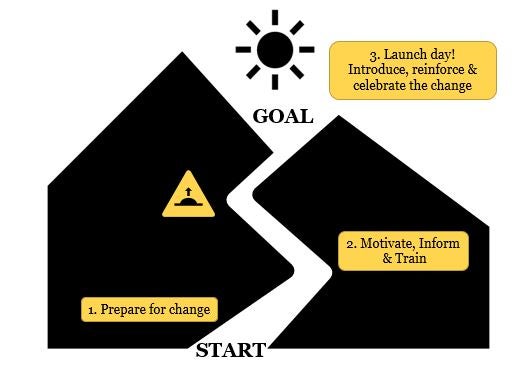Waterloo’s collaborative approach to Change Management (CM) focuses on people (employees, students, retirees, alumni and visitors). To support individuals, teams and the organization manage the change impact, a structured change management approach is applied to achieve the desired change outcome.
Change is about engagement, collaboration, innovation, evolution, and partnership. When implementing a change, a change leader will work closely with individuals to minimize the impact the change may have as people move from a current and familiar state, through a transitionary exploratory state, to the desired defined future state (where the change is implemented and adopted).
When planning change management activities, a change leader will consider and appreciate an individual’s unique change journey. By prioritizing and customizing activities to the individual's needs, change adoption and usage can be enhanced.
Examples of activities the change leader can complete to support and guide an employee as they navigate their change journey fall within three unique change initiative phases:
